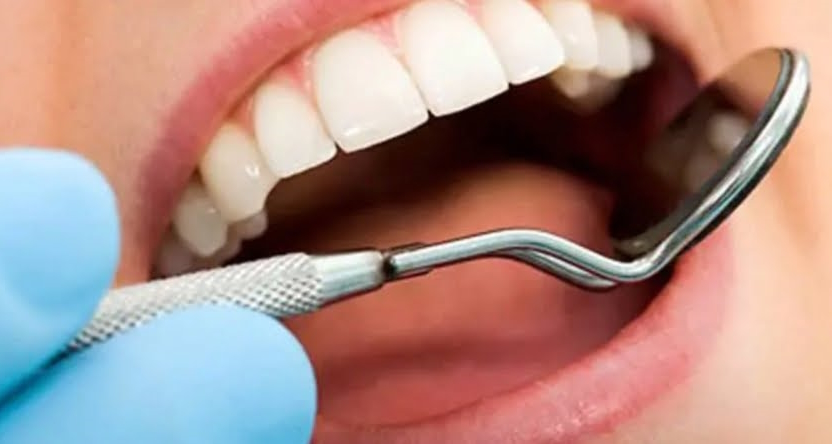All You Need to Know About Open Bite

Do you ever look in the mirror and find yourself dissatisfied with how your smile looks? Or have you noticed that your teeth aren't lining up when your mouth is closed? Then it's likely that you are suffering from an open bite. This condition can make it difficult to chew and speak correctly, but luckily, treatments are available to help resolve this issue.
What Is an Open Bite?
An open bite is a dental condition in which the upper and lower teeth don't meet when the jaw is closed. This dental misalignment can make biting, chewing, and speaking difficult. It may also affect the appearance of your smile. Although it usually only affects the front teeth, it can sometimes include the back molars.
What Causes an Open Bite?
Several factors can contribute to an open bite, including genetics and harmful habits such as thumb-sucking or tongue-thrusting. It is also common in patients with sleep apnea since they tend to push their tongues forward while sleeping.
Other causes include abnormal facial growth due to trauma or birth deformities. An improper alignment of the teeth can also cause an open bite if not corrected early on in life via braces or other orthodontic treatment methods.
Types of Open Bite
Open bites can be divided into two main categories: skeletal and dental. Skeletal open bites occur when there is a discrepancy between the jaws and how they meet when closed; this type may require more advanced treatments such as surgery or braces to correct it fully.
Dental open bites occur in patients whose top and bottom teeth don't match up correctly even though everything else appears normal; this type often requires restorative dentistry treatments like porcelain veneers or crowns to fix them properly.
Signs and Symptoms of an Open Bite
A noticeable sign of an open bite is its appearance which can be prominent when someone smiles or speaks. Additionally, pain or discomfort in the jaw from clenching or grinding may also be present.
The appearance of an Open Bite: An open bite appears as a visible gap between the top and bottom front teeth when the mouth is closed. The gap usually starts from one side of the mouth to another but sometimes appears only on one side.
Pain and Discomfort: Pain or discomfort in the jaw joint can be associated with an open bite due to strain on teeth, muscles, ligaments, etc., due to misalignment within this system as well as clenching or grinding of teeth while sleeping at night-time that puts extra strain on these areas in your mouth.
Treatment Options for An Open Bite
If you have an open bite or know someone who does, it's essential to be assessed by an orthodontist to determine what kind of treatment would be appropriate for your case.
1. Orthodontic Treatment
Orthodontic treatment is typically used to move teeth into ideal positions where they fit together properly when the mouth is closed. Braces or clear aligners are typically used to move individual teeth into alignment over months or years, depending on how severe the case is and how much movement needs to
occur to correct an open bite.
2. Jaw Surgery
In more severe cases involving misalignment that cannot be corrected by braces alone, jaw surgery might also need to take place along with orthodontic treatment. This allows for fully correcting an open bite problem and restoring proper dental positioning while keeping facial symmetry intact, if possible, through surgery.
This type of surgery involves modifying both upper and lower jaws, which makes it very complex and expensive but necessary if it proves advantageous over traditional non-invasive methods like bracing.
C. Oral Appliances/Retainers
Oral appliances/retainers are sometimes prescribed for those who suffer from an open bite due to thumb-sucking or bad tongue posture during speech and sleeping. This appliance helps correct improper biting patterns over time by slowly realigning your jaws back into the proper position through constant gentle pressure exerted from wearing these custom-made retainers.
Prevention of Open Bite
You can prevent an open bite by recognizing the early signs and taking appropriate measures. Here are some prevention tips:
Good Oral Hygiene: Good dental hygiene, including regular brushing and flossing, is essential to prevent any dental problem, including an open bite. Brushing twice daily and flossing once daily will help prevent any future dental problems. Find out about open bites before and after at Dentakay.
Avoid Bad Habits: To lessen the chance of developing an open bite, you should avoid practicing certain habits, including thumb sucking and long-term pacifier use in kids. Other habits to avoid include biting fingernails and chewing on pencils and pens.
Develop Healthy Eating Habits: Developing healthy eating habits is also vital in preventing an open bite from forming. Eating crunchy foods such as apples or carrots and chewing gum can help strengthen the jaw muscles and help promote good oral health.
Conclusion
An open bite can be a challenging dental condition, but it doesn't have to seem overwhelming. With careful monitoring and treatment from a qualified dentist or orthodontist, you can reduce the severity of your open bite and enjoy improved oral health.
Taking the time to learn about an open bite, its causes, and the treatments available can help you decide which treatment option may be best for you. Remember that good oral hygiene and regular dental check-ups can help protect your teeth from developing more serious oral health issues like open bites.







